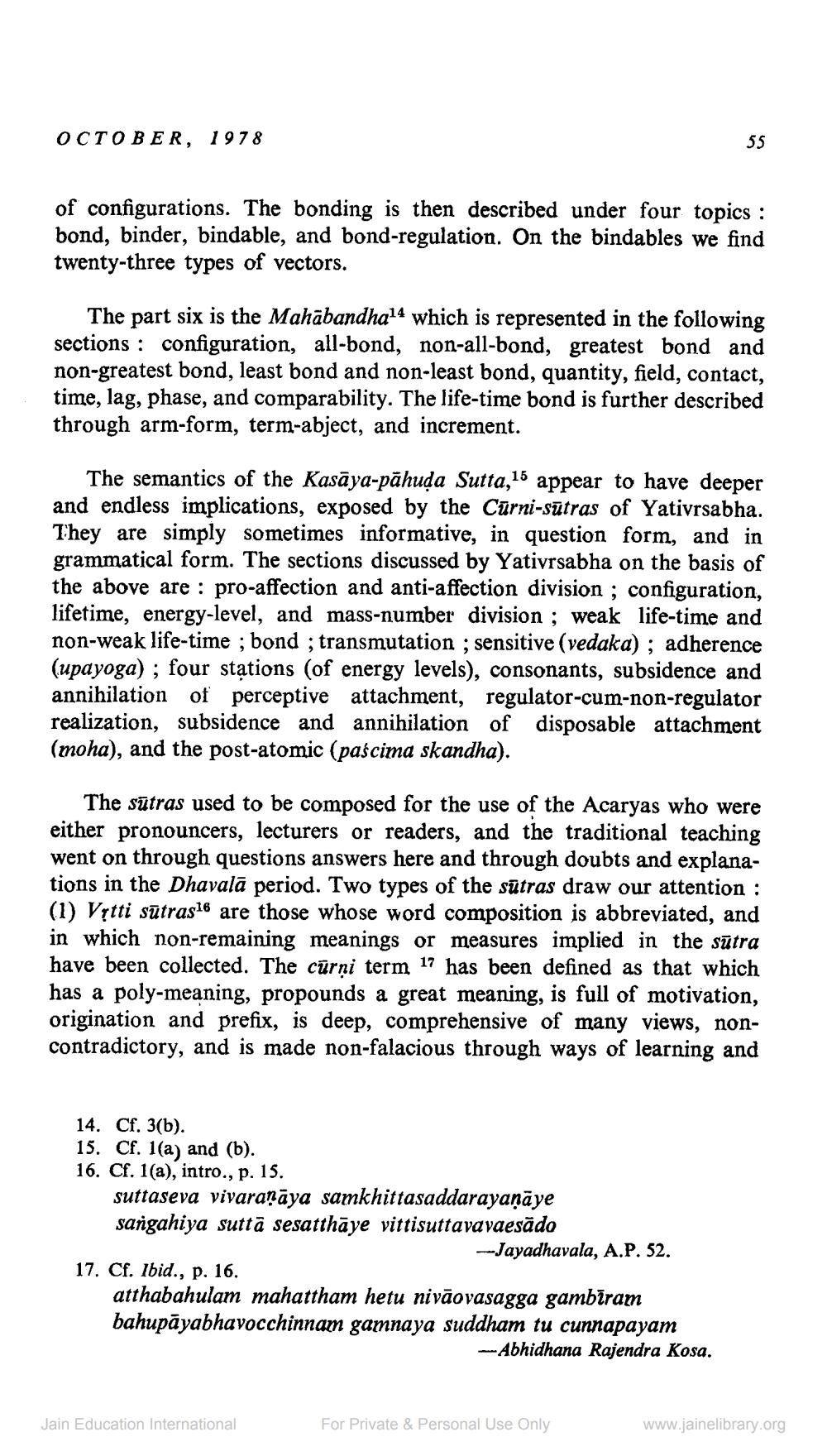________________
OCTOBER, 1978
of configurations. The bonding is then described under four topics: bond, binder, bindable, and bond-regulation. On the bindables we find twenty-three types of vectors.
The part six is the Mahabandha14 which is represented in the following sections configuration, all-bond, non-all-bond, greatest bond and non-greatest bond, least bond and non-least bond, quantity, field, contact, time, lag, phase, and comparability. The life-time bond is further described through arm-form, term-abject, and increment.
The semantics of the Kasaya-pähuḍa Sutta,15 appear to have deeper and endless implications, exposed by the Curni-sutras of Yativrsabha. They are simply sometimes informative, in question form, and in grammatical form. The sections discussed by Yativrsabha on the basis of the above are pro-affection and anti-affection division; configuration, lifetime, energy-level, and mass-number division; weak life-time and non-weak life-time; bond; transmutation; sensitive (vedaka); adherence (upayoga); four stations (of energy levels), consonants, subsidence and annihilation of perceptive attachment, regulator-cum-non-regulator realization, subsidence and annihilation of disposable attachment (moha), and the post-atomic (paścima skandha).
The sutras used to be composed for the use of the Acaryas who were either pronouncers, lecturers or readers, and the traditional teaching went on through questions answers here and through doubts and explanations in the Dhavala period. Two types of the sutras draw our attention : (1) Vṛtti sutras16 are those whose word composition is abbreviated, and in which non-remaining meanings or measures implied in the sutra have been collected. The curṇi term 17 has been defined as that which has a poly-meaning, propounds a great meaning, is full of motivation, origination and prefix, is deep, comprehensive of many views, noncontradictory, and is made non-falacious through ways of learning and
14. Cf. 3(b).
15. Cf. 1(a) and (b).
16. Cf. 1(a), intro., p. 15.
55
suttaseva vivaraṇāya samkhittasaddarayaṇāye sangahiya sutta sesatthaye vittisuttavavaesādo
-Jayadhavala, A.P. 52.
17. Cf. Ibid., p. 16.
atthabahulam mahattham hetu nivāovasagga gambiram bahupayabhavocchinnam gamnaya suddham tu cunnapayam
-Abhidhana Rajendra Kosa.
Jain Education International
For Private & Personal Use Only
www.jainelibrary.org




